Basque Food Dishes: Basic Overview
Common Ingredients
Common Cooking Methods
Courses
Meals
Key Taste
Eating Etiquette
Meal Presentation
Culinary Festivals
Influence and Fusion
Basque Food Dishes: Origin and Region
Cuisine
Cuisine’s Geographical Territory
Popular Types of Basque Dishes
-
Stews
Hearty stews are important entrees in Basque cuisine.
Seafood is the main ingredient for Basque stews, with fish (especially cod), clams, and shellfish as common choices.
Vegetables, legumes, and sausages are popular additions to Basque stews.
Basque people always serve stews with bread, using pieces of bread to mop up the savory sauce.
-
Snacks
Snacks in Basque cuisine are diverse and also double as appetizers or entrees.
These dishes are usually savory bites based on seafood or meat.
Basque dishes are often fried, grilled, or sautéd.
Bite-sized snacks served for pintxos are a mainstay of Basque cuisine.
Basque dishes are the specialties widely enjoyed in the Basque Country, a region that lies in both Spain and France. Due to this geographical location, Spanish specialties and French delicacies strongly influence local dishes.
As the majority of Basque people live in Spain and still retain their distinctive traditions, Basque dishes are often associated with the Basque Autonomous Community in Spain.
Like other regions in the Mediterranean, the Basque Country has a strong liking for seafood, olive oil, dairy products, fruits, and vegetables. Simple yet artful cooking techniques and the love for fresh, local ingredients also characterize Basque cuisine.
I will outline the main features of traditional Basque food, followed by insight into its international popularity and healthy aspects.
Next, I will describe thoroughly the 16 most popular dishes in the Basque countries, the general features of Basque cuisine, and recommended food and drink pairings.
16 Most Popular Basque Dishes with Filters
The best dishes that Basque cuisine has to offer are waiting for you to discover! You can navigate this content more easily by using advanced filters like alphabetical sorting, main ingredients, taste, cooking methods, dish types, courses, and global popularity.
Also, you have the option to filter the list based on specific culinary styles such as traditional, national, street food, fusion, exotic, and vegetarian options.
Pintxos
- Street Food
- Traditional
Pintxos, also known as pintxos, refers to small snacks or appetizers enjoyed in Basque bars or taverns. It means “spike” and was derived from the Spanish verb “pinchar,” meaning to pierce, as such snacks are often fastened with a toothpick.
Pintxos includes various items, such as olives, cheese, seafood, meat, or vegetables, all atop a piece of bread. These small bites are not only a culinary delight but also a social tradition in the Basque Country.
The modern version of pintxos apparently appeared between the 1920s and 1940s. Though similar to tapas in other parts of Spain, pintxos is a distinct Basque specialty.
Txuleton
- Traditional
Txuleton is a luxurious Basque dish of large, bone-in rib steak derived from old, fattier Rubia Gallega cows. It is usually grilled over high heat, creating a charred exterior while keeping the inside tender, juicy, and intensely flavorful.
Locals often season txuleton with only basic spices to enhance its natural flavors and serve the steak with simple side dishes, like roasted vegetables or fries.
The suburbs of San Sebastian is the ideal destination for txuleton in the Basque Country, especially the village of Astigarraga.
Bacalao al Pil-Pil
- Traditional
Bacalao al pil-pil is an iconic Basque dish featuring salted cod (bacalao) cooked in a sauce of garlic, olive oil, and chili pepper in a clay pot. The name “pil-pil” comes from the sound made by the simmering sauce.
While the fish is being simmered, its gelatin emulsifies with the olive oil, creating a rich, silky sauce. This cod dish has a velvety texture and a comfortingly savory flavor.
Legend has it that cod became popular in Basque cuisine in the 19th century due to an accident. A merchant ordered 20 or 22 cod but instead got 20,022, so he sold the surplus to Basque people, who were suffering from a famine at the time.
Marmitako
- Traditional
Marmitako, literally “from the pot,” is a hearty Basque fisherman’s stew made with bonito (a type of tuna), potatoes, onions, tomatoes, and chili peppers. It began as a simple dish prepared onboard fishing boats using the day’s catch when the fishermen had to stay offshore.
Nowadays, marmitako is a beloved comfort food known for its robust flavors. Its taste mixes the freshness of the fish with the earthiness and sweetness of various vegetables.
Marmitako is especially popular during the bonito season in late summer and early fall.
Chipirones en su Tinta
- Traditional
Chipirones en su tinta is a Basque delicacy consisting of small squids cooked in their own ink. It boasts a striking black color and a deep, sea-infused flavor.
The preparation of chipirones en su tinta involves stuffing the squids with their own tentacles and simmering them in a sauce made from their ink, onions, tomatoes, and spices. The cooking process tenderizes the squids into a savory dish.
Chipirones en su tinta is often served with rice or bread to soak up the flavorful sauce.
Bacalao a la Vizcaína
- Traditional
Bacalao a la Vizcaína is a popular Basque stew hailing from Vizcaya province, hence the name. Its main ingredients include rehydrated salted cod, tomatoes, onions, and red bell peppers.
Locals prepare bacalao a la Vizcaína by simmering the salted cod in a rich sauce, merging the salty and savory flavors with a soft, flaky texture.
Txistorra
- Street Food
- Traditional
Txistorra, also known as chistorra, is a popular type of cured sausage in the Basque Country and Navarre. As a thin, long sausage, it is typically fried or grilled and served with tola (a Basque dish similar to Mexican corn tortillas) or as part of pintxos with cider or local wines
Txistorra is made from minced pork or a mixture of pork and beef, garlic, salt, and paprika. The last spice gives this cured sausage a characteristic red color and spicy taste.
With a crispy outer texture and juicy interior, txistorra is a beloved snack, especially during local feast days and festivals.
Bacalao Ajoarriero
- Traditional
Bacalao ajoarriero is a simple Basque dish prepared with salt cod, potatoes, tomatoes, garlic, and eggs. The cod is poached, flaked, and cooked with the other ingredients into a rich, garlicky, and chunky stew.
Legend has it that bacalao ajoarriero was invented by muleteers (mule drivers), who had to travel all the time and mainly ate salted cod and some vegetables. The word “ajoarriero” means something like “mule driver’s garlic.”
Tigres o Mejillones Rellenos
- Street Food
- Traditional
Tigres o mejillones rellenos, also known simply as mejillones rellenos, is a popular Basque appetizer of stuffed mussels. Locals often serve it with a cheese sauce or light drink.
Tigres o mejillones is prepared by mixing boiled mussel meat with a spicy, thick béchamel sauce. The mixture is then stuffed back into the half shells before being breaded and fried.
Torrijas
- Traditional
Torrijas is a popular bread dish made in the Basque country and many other parts of Spain. It is prepared by soaking slices of day-old bread in milk or wine, dipping them in eggs, and frying them in oil, and sweetening them with cinnamon sugar or honey.
Torrijas was first made as a type of recovery food for women post-childbirth in the 15th century. This light dish offers a pleasant contrast between the soft, custardy interior and the lightly crisp exterior.
Piperade
- Traditional
Piperade is a well-known Basque stew full of colors and flavors. It was created in the 19th century in the part of the Basque region that belonged to France.
The core ingredients of piperade include tomatoes, green peppers, onions, eggs, and Espelette pepper, all sautéed in olive oil. These components result in a bright, sweet, and mildly spicy flavor, which goes well with bread, ham, and grilled meat.
Interestingly, piperade reflects the colors of the Basque country’s flag, with hues of green, red and white. Its name was derived from the Latin term “piper” (which means black pepper).
Bacalao con Gulas
- Traditional
Bacalao con gulas is a contemporary Basque dish that combines salted cod with chewy imitation baby eels made from surimi (known as gulas). The salt cod is usually rehydrated, desalted, and sautéed with garlic and olive oil beforehand.
Originally, locals prepared bacalao con gulas with glass eels, a type of tiny eels that live in the Biscay Bay. However, since glass eels are rare and expensive these days, imitation eels have become a popular substitute.
Tolosako Babarruna
- Traditional
Tolosako babarruna, also known as alubias de tolosa, is a Basque bean stew hailing from the town of Tolosa. Some people say that it came from Venezuela in the 18th century, while another theory argues that it was already sold in Tolosa’s weekly market in the 12th century.
Black beans are the centerpiece of Tolosako babarruna, offering a creamy texture and rich, buttery flavor. The beans are slowly simmered with various accompaniments like pork, morcilla (blood sausage), and chorizo.
Traditionally, Tolosako babarruna is accompanied by pickled peppers and cabbage to add a bright contrast to the rich beans.
Etxeko Biskotxa
- Traditional
Etxeko biskotxa, literally “home cake,” is a delightful sponge cake in Basque cuisine. Just as its name implies, every family in Basque has their own recipe to make it.
Eggs, sugar, flour, and lemon zest or vanilla are the core ingredients of etxeko biskotxa, which boasts a light, airy texture and a sweet flavor. This sponge cake hails from a similar dessert called gâteau Basque in the Northern Basque region of France.
Talo
- Street Food
- Traditional
Talo, also known as talau, is a Basque flatbread made of cornflour and cooked on a hot girdle called talo burni. It is suitable for eating on its own, making sandwich wraps, or serving with sweet or savory ingredients, such as cheese, sausage, and milk.
Talo was created in the 1520s when people brought corn from the Americas to the Basque country. This Basque flatbread is a vital element of various Basque rural festivities and Saint Thomas’s Day, a celebration held on December 21.
Next, I will look at the factors that make Basque cuisine stand out from other culinary traditions in the world.
San Sebastian Cheesecake
San Sebastian cheesecake, also known as burnt Basque cheesecake, is a Basque dessert hailing from the namesake city. It was created in the late 1980s by a local restaurant named La Viña.
The main ingredients of this iconic Basque cheesecake are regular stuff like cream cheese, eggs, sugar, and cream. But unlike traditional cheesecakes, the San Sebastian version lacks a biscuit base and boasts a rustic, caramelized exterior.
As a result, you can experience the rich and creamy interior with a melt-in-your-mouth texture more completely. San Sebastian cheesecakes come with no garnish and are served with only a fork.
What Is Special About Basque Dishes?
The five following factors have significantly shaped how Basque dishes develop over time.
Since the Basque Country straddles France and Spain, the cuisines of these two countries have a significant impact on Basque cuisine.
In particular, many regional cuisines in Spain have exchanged ingredients and cooking ideas with Basque cuisine, namely Castilian, Andalusian, and Galician cuisines.
The Basque region’s coastal access makes seafood a staple part of its diet. The mountainous terrain inland, which is suitable for cattle and dairy farming, contributes to the popularity of meat, cheese, and other dairy products.
The temperate climate of the Basque Country is conducive to a variety of agriculture, allowing for a diverse range of vegetables and fruits, such as tomatoes, peppers, and beans.
A movement known as the New Basque Cuisine emerged in the 1970s. Since then, it has innovated traditional Basque dishes by incorporating new techniques and ideas.
This level of innovation is one of the reasons why the Basque Country has many Michelin-starred dining establishments.
Local festivals and celebrations often feature traditional Basque foods and have helped to preserve traditional cooking methods and recipes.
Another important aspect is txoko, referring to gastronomical societies or clubs where members come together to cook, eat, and socialize.
What Are the Best Beverages to Accompany Basque Dishes?
People in the Basque country often pair local dishes with the four types of beverages below.
Wine
The Basque country is home to a large number of wine vintages, from reds to whites. These alcoholic beverages go well with many savory dishes in local cuisine, such as pintxos, bacalao al pil-pil, txuleton, and chipirones en su tinta.
Beer
A light lager or pilsner is a refreshing accompaniment for dishes with a robust taste, namely pintxos, txistorra, and mejillones rellenos.
Coffee
Like the rest of Spain, the Basque country has a passionate love for coffee, whose bitter flavor goes well with dessert and sweet dishes. Recommended pairings are torrijas and etxeko biskotxa.
What do you think about by Basque food offering recommendations? Let me know what you think in the comment section. Remember to share this list of Basque dishes with your friends!


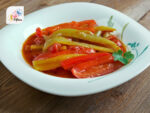
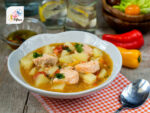
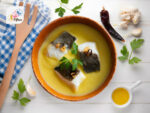
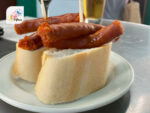
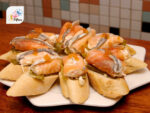
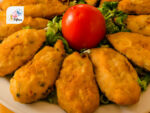
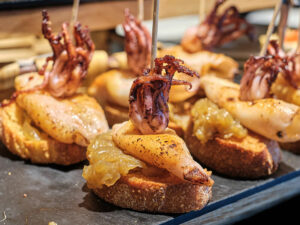
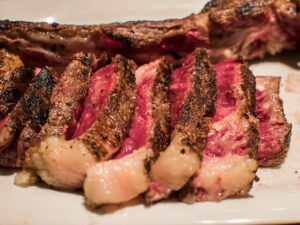
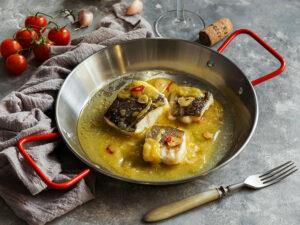
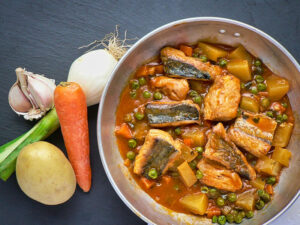
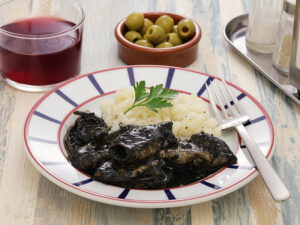
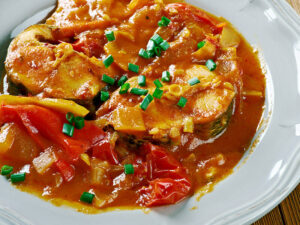
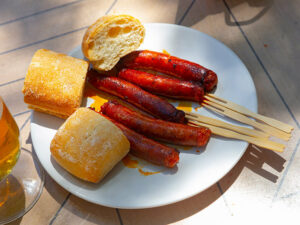
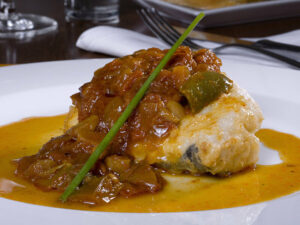
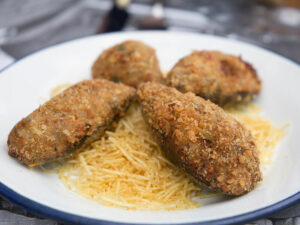

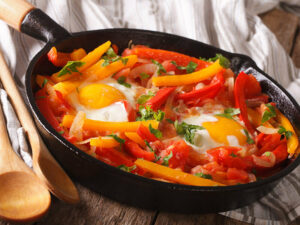
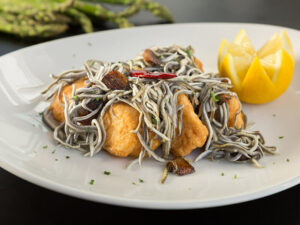
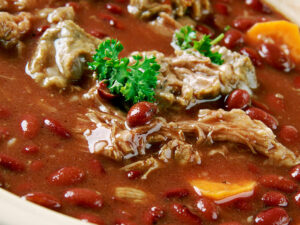
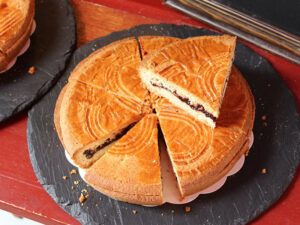
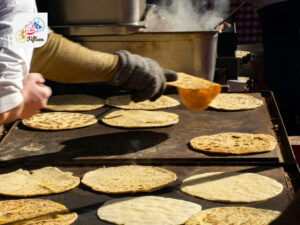
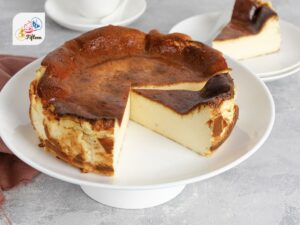
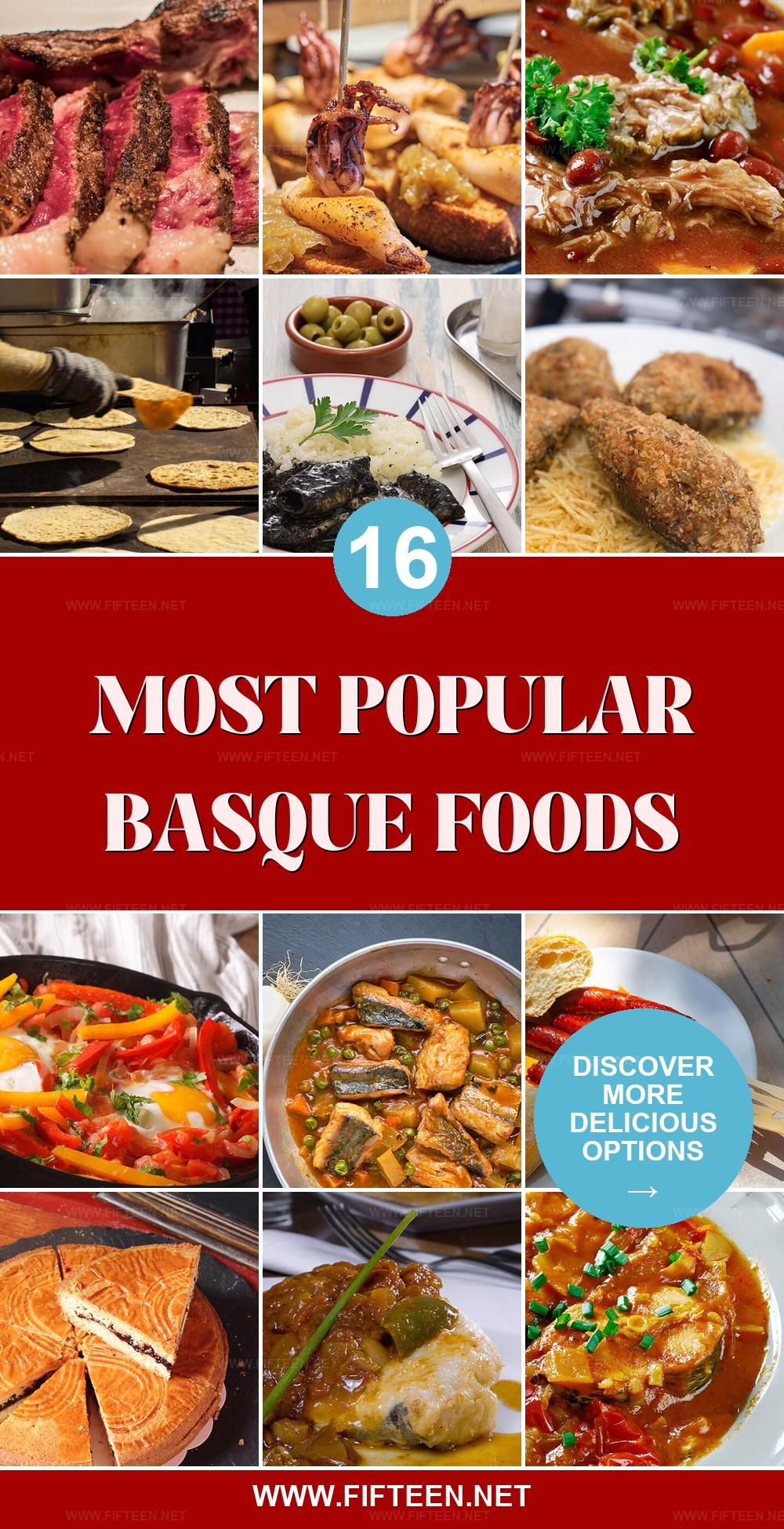
Jamie Scott
Editor in Chief, Senior Content Writer
Expertise
Home Cooking, Meal Planning, Recipe Development, Baking and Pastry, Food Editor, Cooking-video Maker, Western Food Evaluation Expert
Education
Le Cordon Bleu College of Culinary Arts
Local Community College, New York, NY
Jamie Scott is a skilled culinary expert and content creator specializing in Western cuisine. With over 15 years in the culinary field and formal training from Le Cordon Bleu, Paris, Jamie deeply understands how to blend nutrition with delicious flavors. His passion for cooking matches his commitment to making healthy eating accessible and enjoyable.
On Fifteen.net, Jamie brings a fresh perspective to classic dishes and beverages, offering readers insightful recipes, cooking tips, and a fresh view on meal planning that emphasizes taste, health, and simplicity.